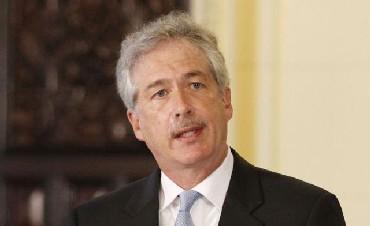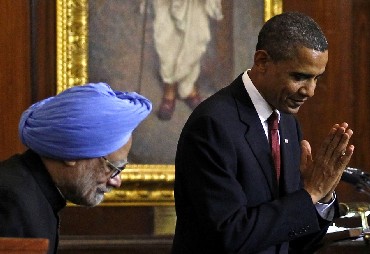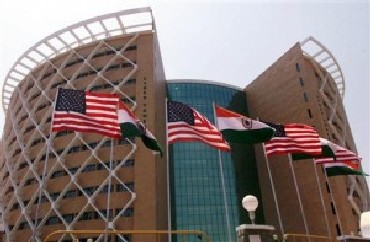Lalit K Jha in Washington
The private sector in India and the United States has succeeded in fostering historic trade relationships between the two largest democracies of the world, a top Obama Administration official said on Thursday.
"Your companies and the private sectors they represent have succeeded in fostering historic trade relations among our two countries," US Deputy Secretary of State William Burns said in his address to the US-India CEO Forum meeting in Washington.
"The CEO Forum is a unique channel that allows each of our governments to hear from a diverse representation of the private sectors of both of our countries. Your recommendations have informed us and challenged us to tackle the persistent hurdles we oftentimes face in implementing our shared vision of ever greater US-India cooperation," he said.
...
Who is behind the success of India-US trade ties?
Photographs: Reuters
Created in July, 2005, and reconstituted in November, 2009, the CEO Forum is an initiative taken up by the two governments and the private sector to enhance bilateral trade and investment.
The forum last met in November, 2010, in New Delhi. While the Indian CEOs were represented by Tata Group Chairman Ratan Tata, those from the US were led by Honeywell International Chairman David Cote.
"The year 2010 was a record-breaking one in US-India trade, with trade in goods up 30 per cent to a high of some USD 49 billion, moving India up two notches to become our 12th largest trading partner. This is excellent progress," Burns said.
"But we all recognise that the potential for our relationship is so much greater," he added.
...
Who is behind the success of India-US trade ties?
Image: U.S. President Barack Obama and India's Prime Minister Manmohan SinghPhotographs: Reuters
"But we all recognise that the potential for our relationship is so much greater," he added.
Burns said the two governments have created and continue to create new opportunities for greater interconnectedness between the two economies, such as the historic civil nuclear deal, the decision of President Obama to remove Indian government entities from export control lists, the rapid growth in defence sales and cooperation, the Partnership to Advance Clean Energy and a bilateral aviation safety agreement.
"And as industry leaders, you continue to play a critical role in highlighting the importance of our ties to our two publics and to the US Congress and Indian Parliament. Tens of thousands of jobs are created in the United States and surely as many in India by our respective investments in each others' economies. This needs to be better understood," he said.
...
Who is behind the success of India-US trade ties?
Photographs: Reuters
Observing that India is projected to become the world's third-largest economy by 2030, Burns said to reach this goal, India will obviously need sustained growth over the coming years and the US will have to be part of that equation if India is to realise this potential.
"Prime Minister (Manmohan) Singh has remarked that US prosperity is in India's national interest and the same is also true for us - India's rise and its continued economic growth is deeply in the American national interest," he said.
At this time of global economic anxiety, the two governments are committed to work together for bodies such as the G-20, where advanced economies and those still emerging can learn from one another and can forge coordinated responses to the challenges before them, he said.





article